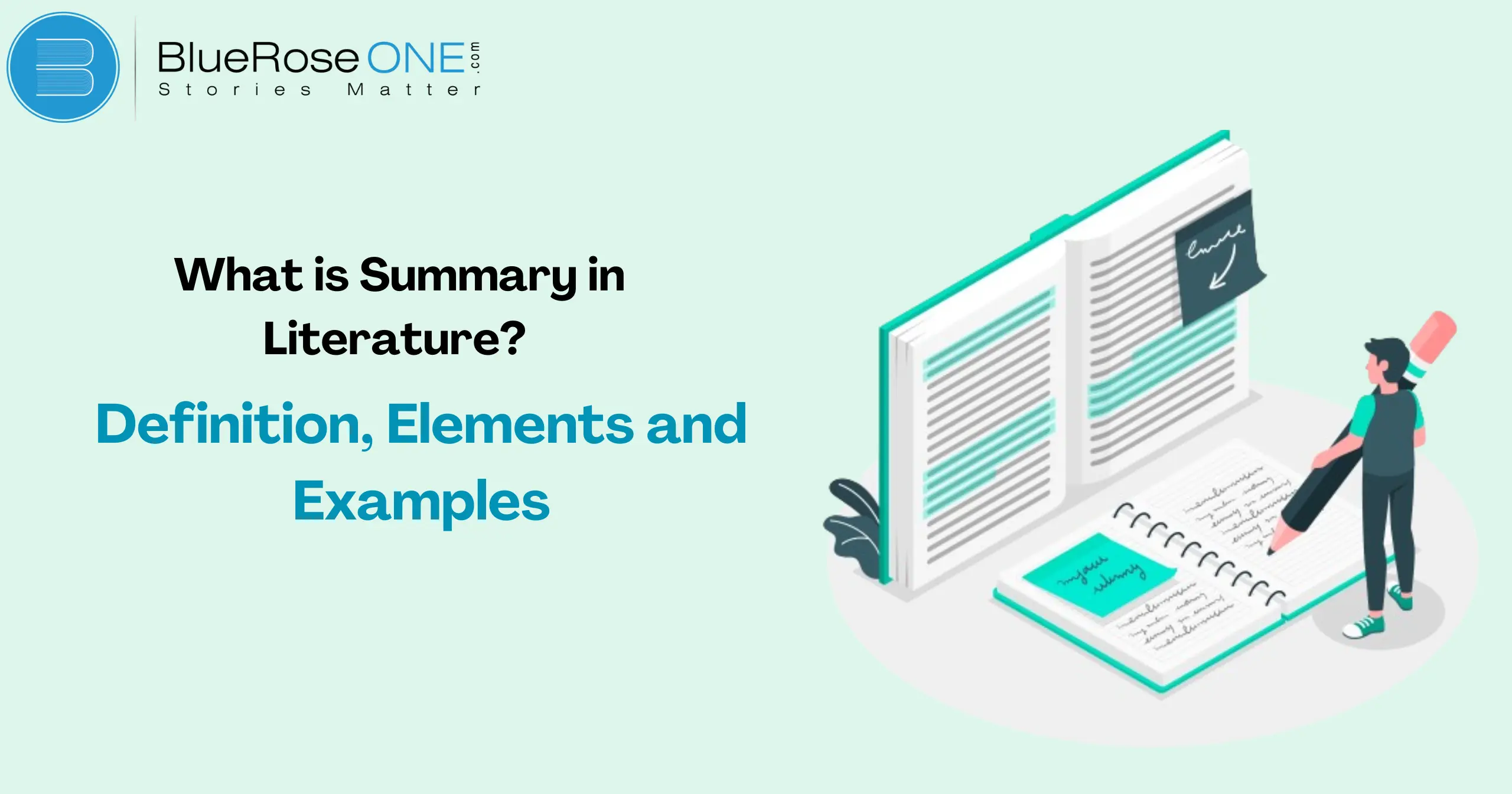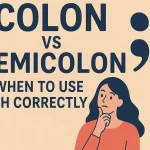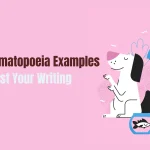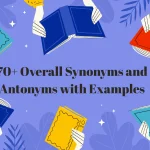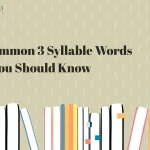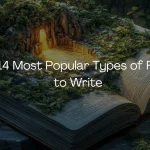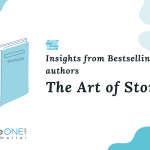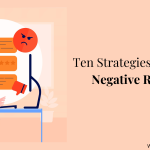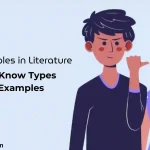Have you ever had trouble distilling the main ideas of a complex piece of literature? That’s why having a summary is helpful! A summary is a condensed representation of a text’s major concepts and important details in literature.
Summaries are very useful tools for academics, students, and casual readers alike since they enable us to swiftly and effectively absorb complex tales. Let’s examine what constitutes an excellent summary and look at several instances to show how to use it.
You may also like: Literary Fiction vs Genre Fiction: Definition & Examples
The Purpose of Summarizing
Clarifying Complex Texts
It is frequently necessary to summarize difficult books in order to reduce their key concepts to more manageable language. A summary makes complex or lengthy content easier for readers to understand by providing it in a more digestible format.
Summaries simplify complex information by concentrating on the most important ideas and points, which helps readers comprehend and remember the material. A well-written synopsis can help readers better understand the main ideas and plot points of a work of literature.
Providing Quick Overviews
Rapid synopses is one of the main goals of summarizing material. A summary distills a text to its most important ideas and points, leaving nothing out.
This makes it easier for readers to understand the main idea without having to read the complete book. Summaries provide a concise overview by emphasizing crucial information, which facilitates comprehension and memory of the material.
Effective summaries guarantee that important ideas are conveyed in a clear and concise manner, making them useful resources for writers and readers alike.
Enhancing Comprehension
Recapitulating is essential to improving understanding. A summary assists readers in understanding the major ideas without becoming bogged down in details by condensing a text down to its essential parts.
This simplifying technique makes material easier to comprehend and remember. Complex literature becomes more approachable and captivating when readers concentrate on a summary since it makes it easier for them to recall important ideas and follow the main plot. As a result, a well-written summary is an effective technique for raising reading comprehension.
You may also like: List of 10 Best Libraries in Portsmouth for Book Lovers
Key Elements of a Summary
Main Ideas
The primary notion or focal point of the text being summarized is known as the main idea of a summary. This sums up the main idea or argument of the original text in a clear and succinct manner.
Concentrate on condensing this primary point into a few concise phrases while writing a summary. This guarantees that the summary is succinct and easily comprehensible while faithfully reflecting the original information. For a summary to be effective, the primary point must be recognised and expressed.
Supporting Details
In a summary, supporting elements are essential since they give the primary arguments context and evidence. These particulars guarantee that the synopsis is factual and educational by supporting and elaborating on the main concepts.
In literature, the summary is supported by highlighting important themes and story elements by the inclusion of pertinent information, instances, and excerpts from the work. Clear and succinct summary that effectively supports the main points of the original work is guaranteed.
You may also read: Top 15 Short Novels to Read in a Weekend
Conciseness
A summary’s conciseness is an essential component. It entails distilling the essential concepts of the source text while expressing them in the fewest possible words.
A summary should cut out extraneous information and concentrate on the main idea so that the reader can quickly and easily grasp the main ideas. A summary’s ability to be brief allows it to convey the essential ideas without overwhelming the reader with unnecessary details.
Objective Tone
A summary’s conciseness is an essential component. It entails distilling the essential concepts of the source text while expressing them in the fewest possible words.
A summary should cut out extraneous information and concentrate on the main idea so that the reader can quickly and easily grasp the main ideas. A summary’s ability to be brief allows it to convey the essential ideas without overwhelming the reader with unnecessary details.
You may also like: How to Publish a Book? | Publish Your Book | BlueRoseOne
You may also like: The Housemaid Series in Order: A Complete Reading Guide
Types of Summaries
Descriptive Summary
A descriptive summary gives a thorough explanation of a text’s key ideas. A descriptive summary, in contrast to an abstract, provides a detailed synopsis while encapsulating the main ideas, characters, and plot.
It assists readers with comprehending the main ideas and organization of the work without delving too far into analysis. This kind of summary helps preserve simplicity and clarity while providing a thorough grasp of the text’s content.
Analytical Summary
An analytical summary dissects a document to examine its ideas, arguments, and overall effectiveness rather than just summarizing its information.
An analytical summary, in contrast to a broad summary, evaluates the text’s advantages and disadvantages and offers insight into how the material accomplishes its goals.
This kind of synopsis is especially helpful in academic and critical writing and is necessary for comprehending complicated literature. It aids readers in understanding not only what is said but also how and why it is expressed.
Critical Summary
A critical summary assesses a text by outlining its key ideas and pointing out its advantages and disadvantages. A critical summary incorporates opinions and personal observations, in contrast to a basic summary that just offers the information.
This kind of summary is helpful for comprehending not just what is written in a book but also how well it communicates its meaning and impact. A critical summary aids readers in comprehending the summary’s wider implications on a deeper level by including analysis.
You may also like: How much will it cost to publish a Book in India?
You may also like: 100+ Adjectives Begin with I (With Definitions & Examples)
Steps to Writing a Summary
Reading and Understanding the Text
You should carefully study the content you wish to summarize before beginning to produce an excellent summary. In order to create a precise summary, one must comprehend the major concepts and important details.
Ignore unnecessary details and concentrate on highlighting the main ideas and concepts. To extract the essential ideas without distorting the original meaning, pay close attention to the text’s organization and flow.
Understanding the main idea will help you write a succinct, logical summary that accurately captures the importance of the material.
Identifying Main Points
Determine the primary ideas of the text before beginning to write a summary. Pay attention to the main points and significant details that summarize the material.
Effectively accomplish this by attentively reading the content and noting or underlining the main points and arguments. Refrain from getting mired in specifics or illustrations.
You can write an understandable and succinct summary that captures the essence of the original material by focussing on these key ideas.
You may also like: 30 Examples of Epigram to Motivate and Enhance Your Writing
Writing the Summary
To guarantee accuracy and clarity, there are a few distinct phases involved in writing a summary. To understand the primary concepts and overall meaning of the original text, start by reading it carefully.
Next, list the main ideas and points that the text is emphasizing. In your own words, provide a succinct synopsis of these components, being careful to omit any superfluous information and preserve the original intent.
Finally, proofread your summary to make sure it is succinct and direct, capturing the main ideas of the book.
Reviewing and Revising
Reviewing and editing your summary once you’ve written it are essential stages. Start by ensuring that your summary accurately encapsulates the primary concepts and crucial components of the source material.
Make sure your summary successfully communicates the main idea without adding extraneous details. Aim for clarity and conciseness. Make any uncomfortable phrase revisions and grammar corrections.
By going through this process, you can improve the accuracy and readability of your summary. Make sure your summary adheres faithfully to the original content at all times.
Summary vs. Analysis
Differences Between Summary and Analysis
A summary provides an overview of the content, while an analysis interprets and evaluates it. Summaries focus on “what” happens, whereas analyses delve into “why” and “how.”
When to Use Each
Use a summary for quick overviews and understanding of content. Opt for an analysis when you need to explore deeper meanings or evaluate the text critically.
Tips for Effective Summarizing
Focus on Main Ideas
Concentrate on the core elements of the text. Avoid getting bogged down in minor details.
Avoid Personal Opinions
Stick to the text’s content without adding your own views or interpretations.
Use Your Own Words
Paraphrase the text rather than copying directly to ensure originality and understanding.
You may also like: How Can I Get a Book Published?
You may also like: Where the Red Fern Grows Book Summary & Themes
Examples of Summaries in Literatue
Novel Summary Example
Consider summarizing Pride and Prejudice by Jane Austen. A brief overview might include Elizabeth Bennet’s struggle with societal expectations and her evolving relationship with Mr. Darcy, focusing on key plot points like their misunderstandings and eventual union.
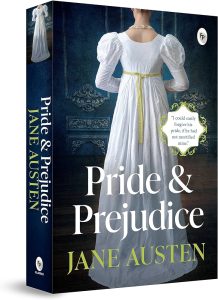
Short Story Summary Example
For Edgar Allan Poe’s The Tell-Tale Heart, a summary would highlight the narrator’s descent into madness and the murder of the old man, emphasizing the narrator’s attempt to conceal his crime and his eventual confession.

Poetry Summary Example
In summarizing Robert Frost’s The Road Not Taken, focus on the poem’s exploration of choices and their impact on life, summarizing the narrator’s reflection on choosing a less-traveled path.

Conclusion
Summaries are essential tools in literature for distilling complex texts into more manageable forms. By focusing on main ideas, supporting details, and maintaining objectivity, you can create effective summaries that enhance comprehension and provide quick insights into a text’s content.
Whether you’re summarizing a novel, short story, or poem, following these guidelines will help you capture the essence of the material accurately and concisely.

